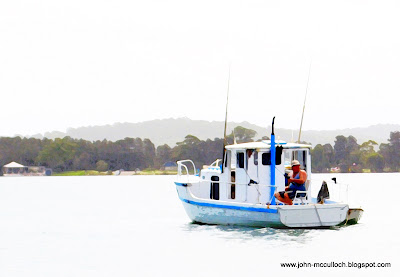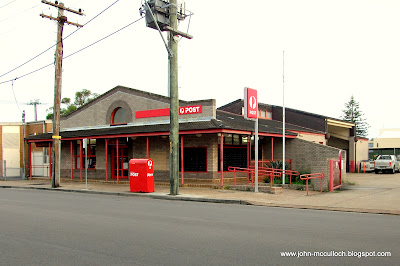
Now we all know you can't have a town without postal services, so in 1848 the first Post Office began operations from Mr Serisiers's store, making him Dubbo's first Postmaster (however from 1847 there was an 'ad hoc' service from Wellington). In 1849 the township of Dubbo was declared and the first land sales began to take place. Even though the town was situated in a prominent area and had a viable crossing of the Macquarie River, the population numbered only numbered 47 in 1851.
In 1862/3 the Court House moved again to new premises in Macquarie St and it also seems to be when the Post Office also moved to into the new Court House premises. In 1866 however, with the arrival of the telegraph from Wellington, tenders were put out for the construction of a new Post Office and in 1867 the new Post Office was completed.
 The town continue to grow and in 1872 the town had grown to 850, becoming the major commercial, manufacturing and service centre for western NSW. It was also in 1872 that Cobb & Co. took over the mail run from Wellington to Dubbo to Bourke with a twice weekly service, utilising a two horse coach. The town was now thriving and its status was confirmed as the 'capital' on western NSW when the railway finally arrived in 1881 and the population quickly grew to 3200.
The town continue to grow and in 1872 the town had grown to 850, becoming the major commercial, manufacturing and service centre for western NSW. It was also in 1872 that Cobb & Co. took over the mail run from Wellington to Dubbo to Bourke with a twice weekly service, utilising a two horse coach. The town was now thriving and its status was confirmed as the 'capital' on western NSW when the railway finally arrived in 1881 and the population quickly grew to 3200.Around 1885 NSW Government architect, James Barnet was commissioned to design, not only the new Post & Telegraph Office, but also a new Court House. Dubbo was certainly a town on the move. The new Post Office, completed in1887, was designed in Barnets Italian Renaissance style, using cement rendered brick, ornate archways, slate roof and the imposing clock tower, very similar to the Maitland Post Office.

This lovely building was handed over to Telecom in 1982, (who have since restored it to its former glory) when Australia Post moved into a more functional purpose built building in Talbragar Street.
The people of Dubbo now have a generic, somewhat bland, Post Office (that is now getting close to 30 years old!) and although functional, it has not got the classical design of a James Barnet original building, a building that has complemented the Dubbo streetscape for over 123 years.
I don't think people will be commenting on the current Post Office in another 100 years.
This blog is nowhere near complete and I will have to spend full day at the Dubbo library to fill in some large chunks of the missing postal history of Dubbo.











.jpg)








